It was clear that Liberal Candidate Carney would win in Canada fairly early in the night.
And Australian Labor Party leader Albanese likewise enters the election this weekend as a strong favorite.
However, before Trump was elected, the more liberal candidates in Canada and Australia were beyond longshots.
The fact that conservatives are not doing well in other countries is directly due to Trumpism. You can ask the politicians, and the voters - they'll tell you.
My motivation for doing a Canadian forecast was mostly based on the fact that I got angry listening to people on TV and social media EXTREMELY confident that Liberals would win in a blowout.
From YouGov:
That's not to say there's never a scenario where federal elections could be heavily favored for one side, but no recent election (that I've forecasted, anyways) has had data to support that.
In regards to Canada, it's not that I disagreed that Liberals were strong favorites, it's that the models were VERY overconfident in Liberals getting a majority of seats.
Here, I'm simply pointing out that this forecast seems overly confident that Liberals would get a majority.
Naturally, as social media tends to do, all kinds of people angrily comment that I can't possibly know more than the models they like, even when they don't know what the margin of error is.
(Big American data man can't possibly understand Canadian Data! Canadian Data is special!)
Anyways, Liberals didn't quite earn a majority in Canada, which was not my preferred outcome, but it's much harder for me to skew my models in my preferred direction than it is to just try and have a good one.
Australian Election Analysis
What's happening in Australia’s election is just a more extreme version of Canada's election.
Labor are truly stronger favorites in Australia than Liberals were in Canada…but again the YouGov forecast is skewed heavily towards them.
This model from YouGov - again - has a remarkably narrow range of outcomes for the major parties.
To be clear, there are probably 10-20 seats that will be decided by a few thousand votes. No model can possibly be that precise.
And a dozen more could be competitive.
To place 76 (which is a majority) at the LOW end of your probable outcomes, with a median of 84, is pretty indefensible.
Here is YouGov’s forecast:
97% that Labor wins a majority. Wild.
I don't have many/any politically active Aussies in my circles or inboxes, but I really hope things aren't too complacent over there. Though voting is compulsory, so maybe it doesn't matter?
Regardless, while an Labor Majority is definitely possible - even a large one - it would not be a catastrophic upset or huge surprise if they end up with a minority.
My forecast for Australia’s election:
The range of possible outcomes certainly extends to 84 seats for Labor. But that would be a very good night, not an average one.
For the record, unlike my US and Canadian forecasts, I'm perfectly willing to consider the possibility that my math is poor here, because the two-party preferred runoff system has more moving parts.
Nonetheless, even with my own uncertainty factored in, and even though I do think a Labor Majority is the most likely outcome - if you were to offer me, say, 10-1 odds that they DON'T get a majority (which is a pretty good expected return if you think 97% are the true odds) - I'd ask for a liquidity check because I would absolutely wager as much as I could.
For what it's worth, though no one really cares, the Popular Vote forecast:
Follow along with my live-ish updates here



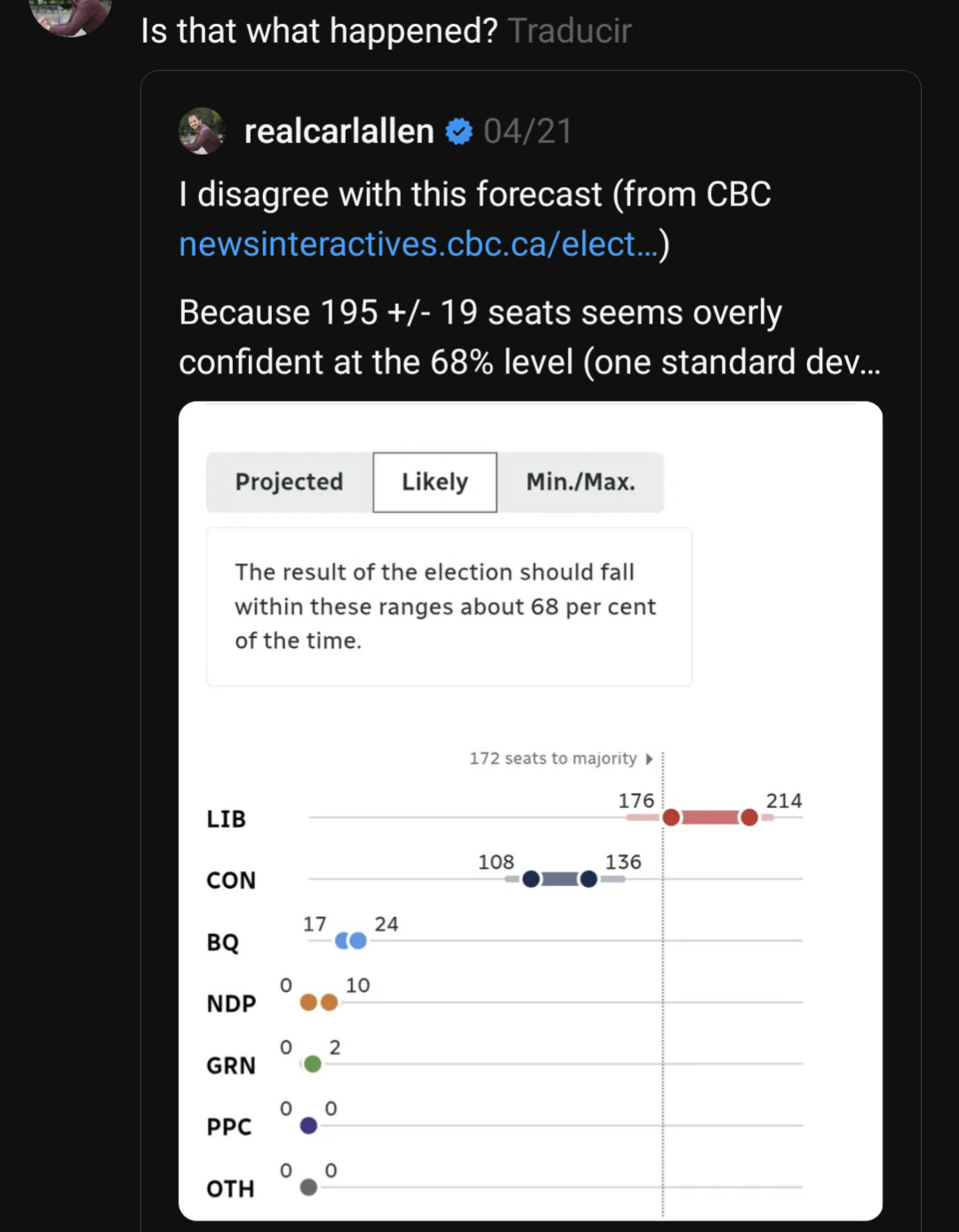
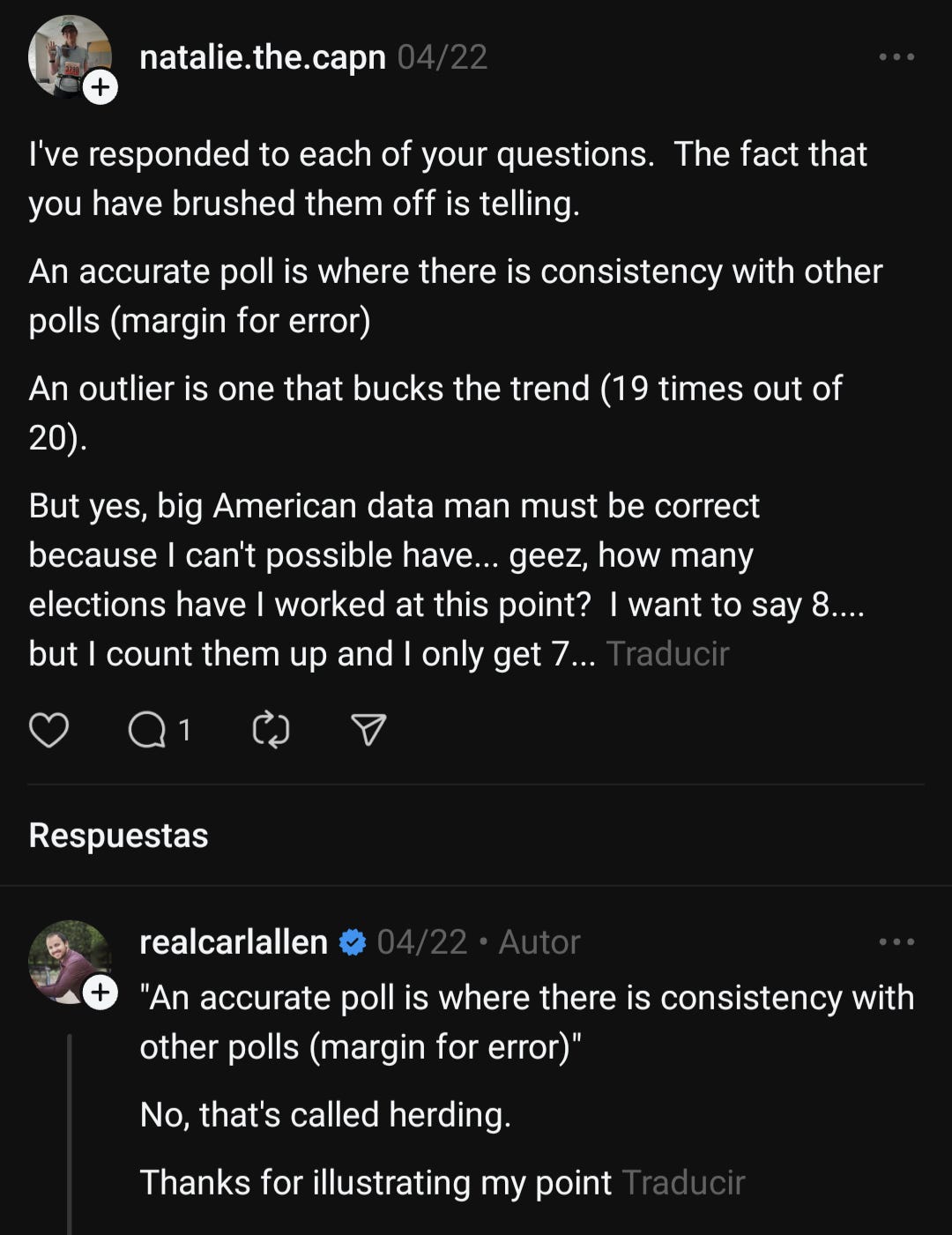
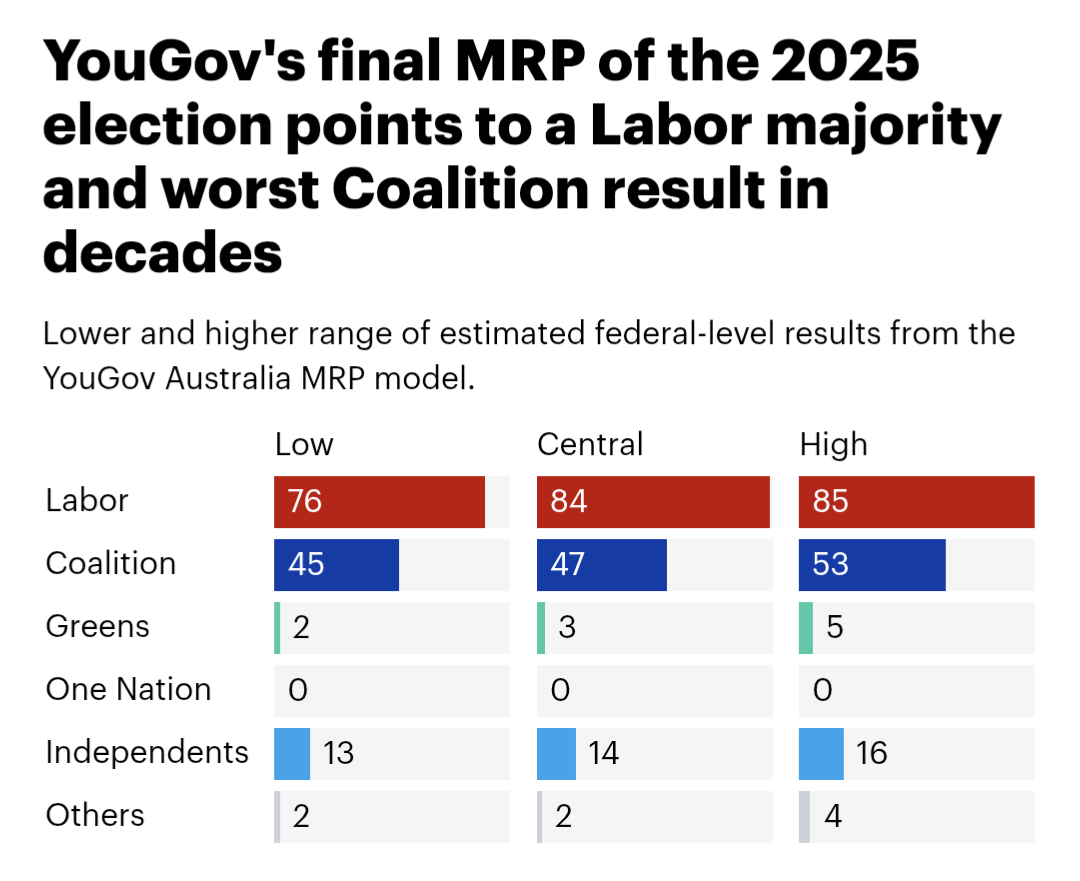
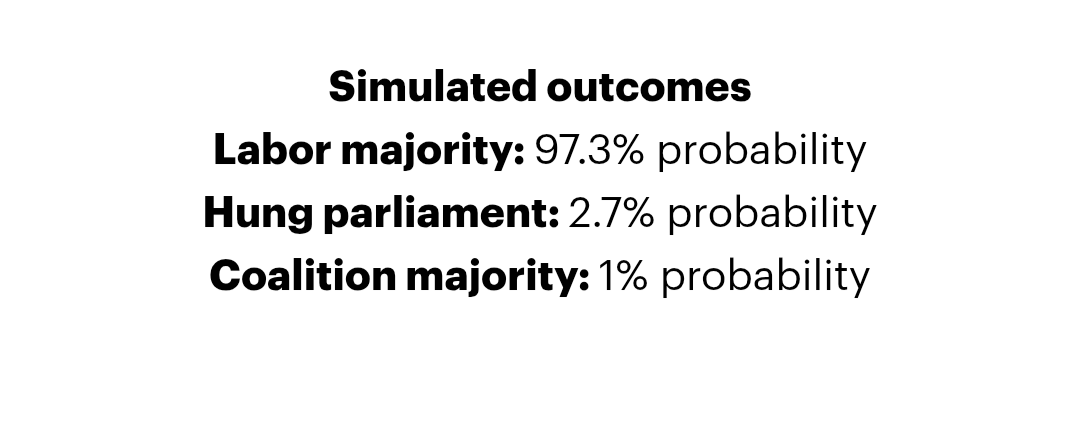
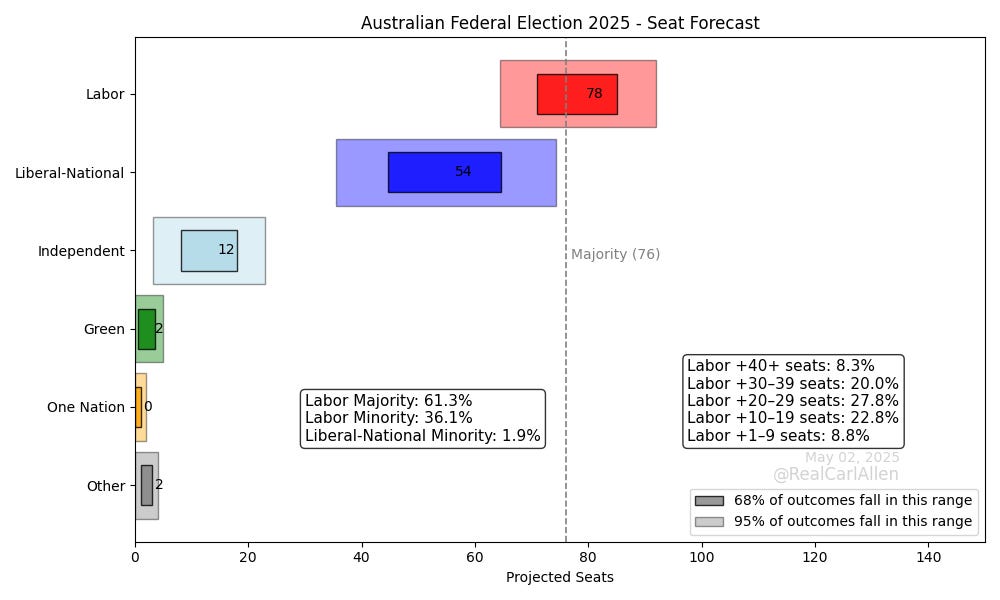
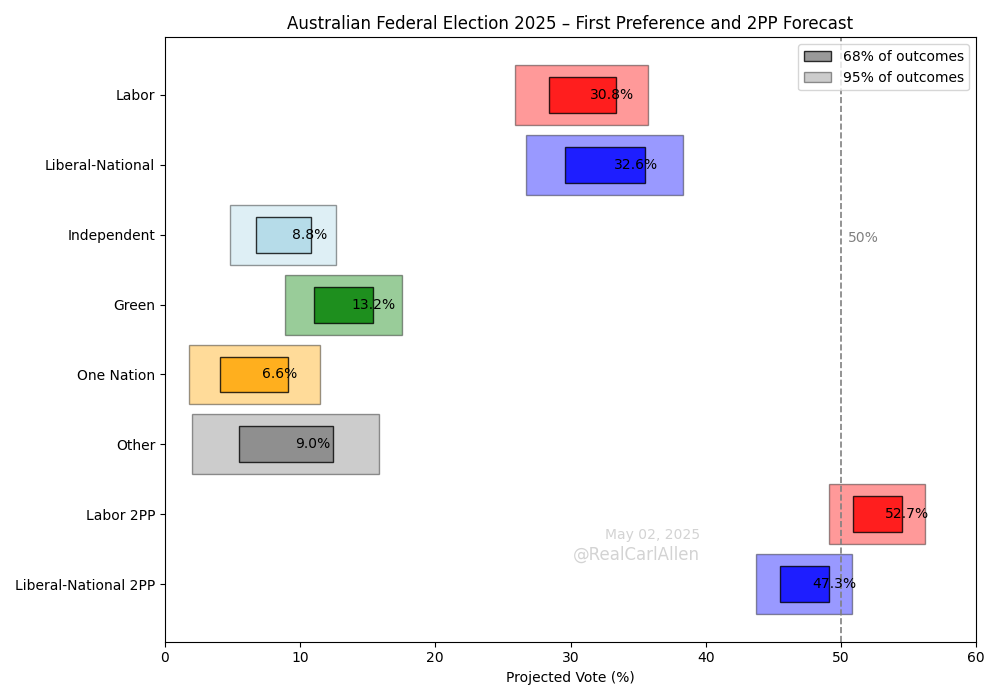
Great work mate!
Would have loved to have got my own model up in time but found the poll datasets (Wikipedia, Poll Bludger) have insufficient info, especially with numbers on independents and others.
I like your approach. But unless I missed it, I didn’t see what the current breakdown in seats is and what number is needed to have a majority. That would help us understand what number of seats Labor needs to get a majority and what the various Labor + X scenarios mean.